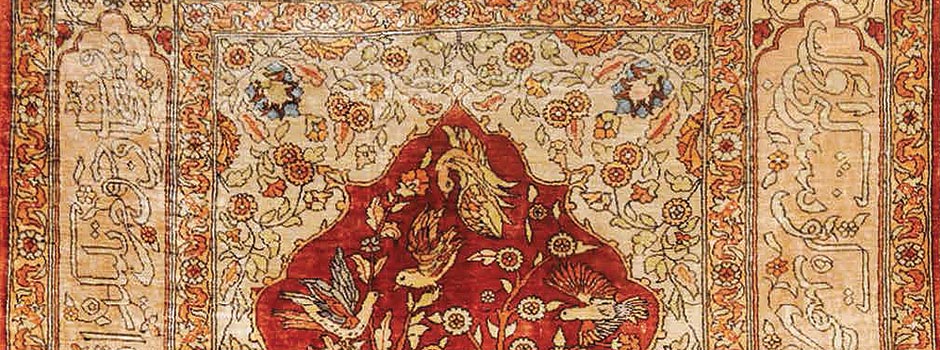
BOOK REVIEW Handmade Prayer Carpet Through History
Feb 11, 2015 Book Review
 The book 'Handmade Prayer Carpet Through History' / Courtesy of IRCICA
The book 'Handmade Prayer Carpet Through History' / Courtesy of IRCICA
Rich with photos of handmade prayer carpets, masterpieces made of silk, wool and cotton from various countries of the Muslim World well-known by their handmade carpet mastery, like Turkey, Azerbaijan, Uzbekistan, Turkmenistan, Kyrgyzstan, Iran, Egypt, Morocco, Tunisia, Algeria and Mauritania, in addition to the Sadou weaving of Kuwait.
The Volume provides a long introduction that discusses the development process in the field of prayer carpets weaving through history from its inception. The Volume also provides an introduction of the various terms and names used in different geographical regions, a classification of the raw materials, variety of the natural dying, kinds of applied knots, and explanation of the different types of looms used in each of the regions. The book is considered to be the first of its kind in the field of handmade prayer carpets weaving.
The book emphasizes the different types of ornamentations used to create handmade carpets. It highlights a variety of geometric and floral forms with natural colours that enhance its design and its beauty.
The most distinguished aspect of the Volume is the set of unique coloured photos of prayer carpets woven by a group of master artisans who are still working today and who innovate unique designs in line with the old masterpieces.
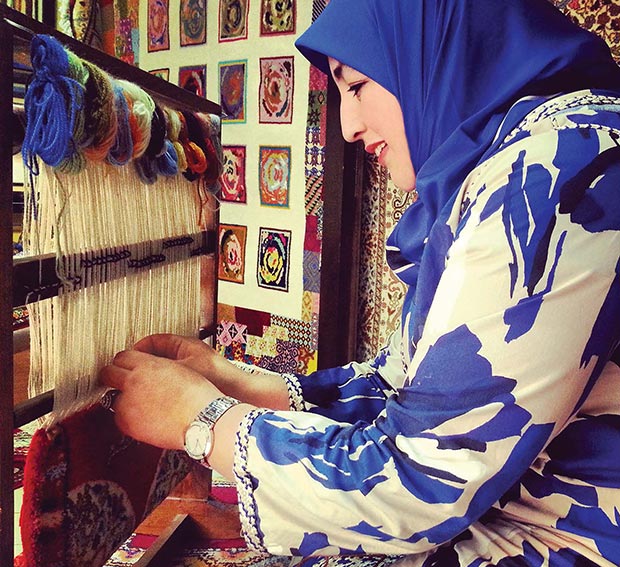 Artisan Amal Al Saghiouri from Morocco / Courtesy of IRCICA
Artisan Amal Al Saghiouri from Morocco / Courtesy of IRCICA
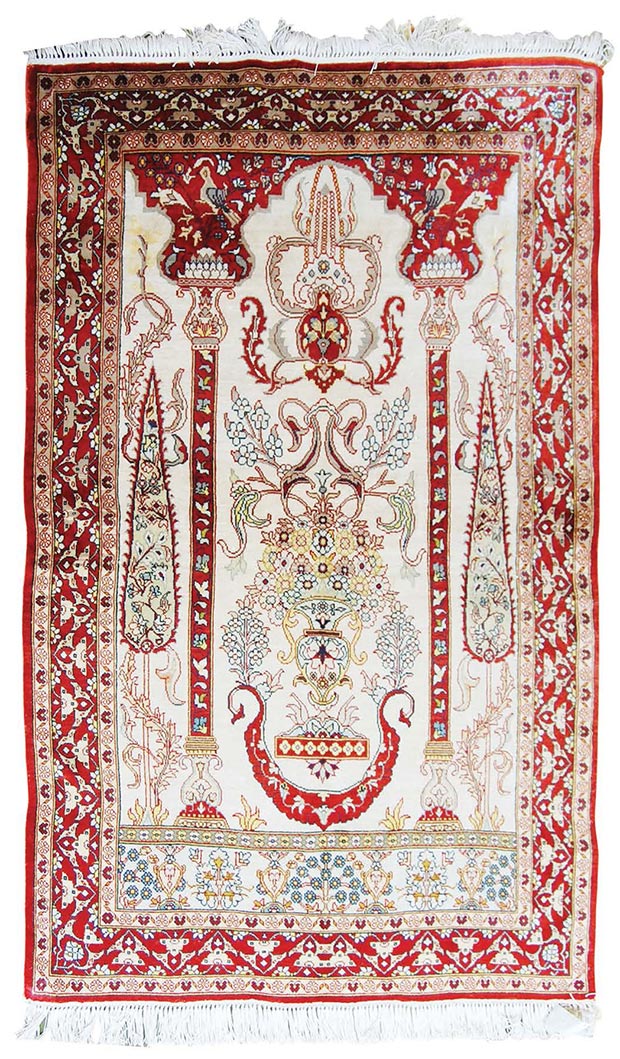 An Egyptian handmade Prayer Carpet with Columns, made from natural silk, size 90x130 cm / Courtesy of IRCICA
An Egyptian handmade Prayer Carpet with Columns, made from natural silk, size 90x130 cm / Courtesy of IRCICA
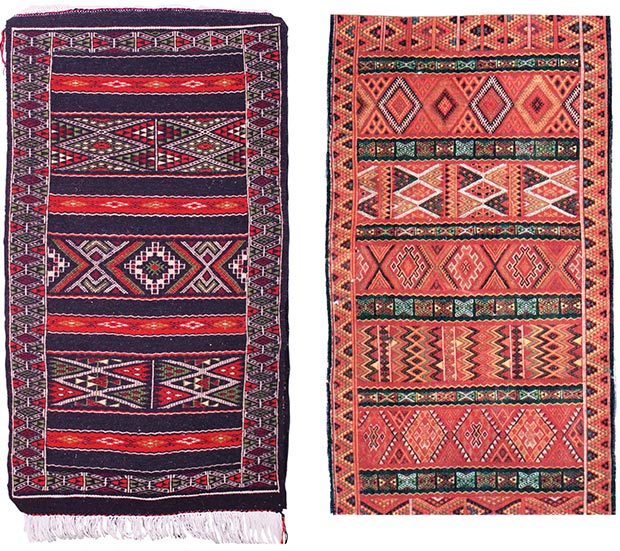 Left: A handmade Algerian Barber Prayer Carpet made from natural wool, 110x60 cm / Right: A handmade Algerian Barber Prayer Carpet made from natural wool, 120x70 cm / Courtesy of IRCICA
Left: A handmade Algerian Barber Prayer Carpet made from natural wool, 110x60 cm / Right: A handmade Algerian Barber Prayer Carpet made from natural wool, 120x70 cm / Courtesy of IRCICA
 An Egyptian handmade Prayer Carpet of Bakhtiar type, made from natural silk, 90x115 cm / Courtesy of IRCICA
An Egyptian handmade Prayer Carpet of Bakhtiar type, made from natural silk, 90x115 cm / Courtesy of IRCICA
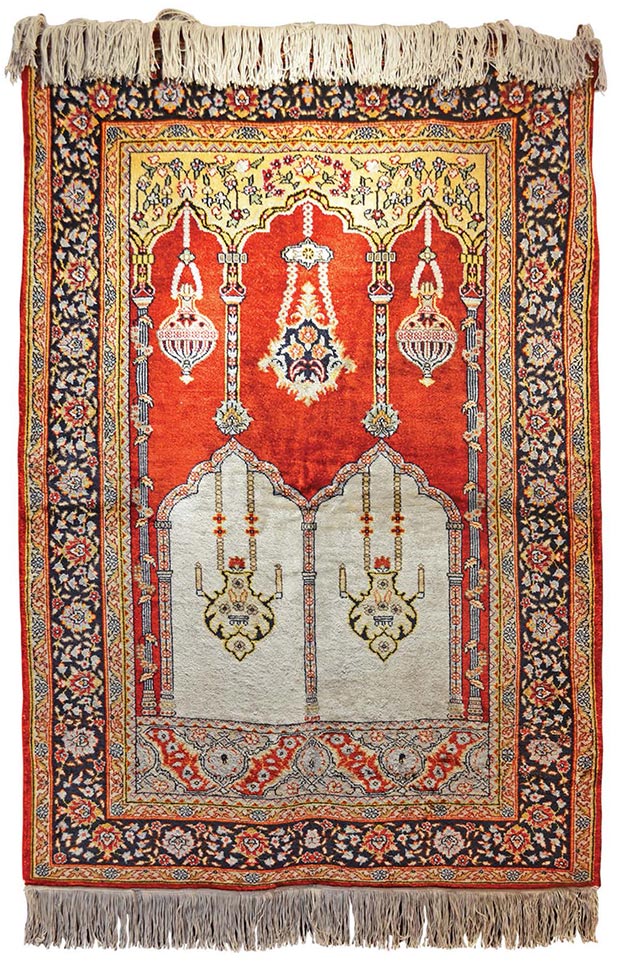 An Egyptian handmade Prayer Carpet by Artisan Zakariya Abu Sa’da, mihrab type, made from natural silk/ Courtesy of IRCICA
An Egyptian handmade Prayer Carpet by Artisan Zakariya Abu Sa’da, mihrab type, made from natural silk/ Courtesy of IRCICA
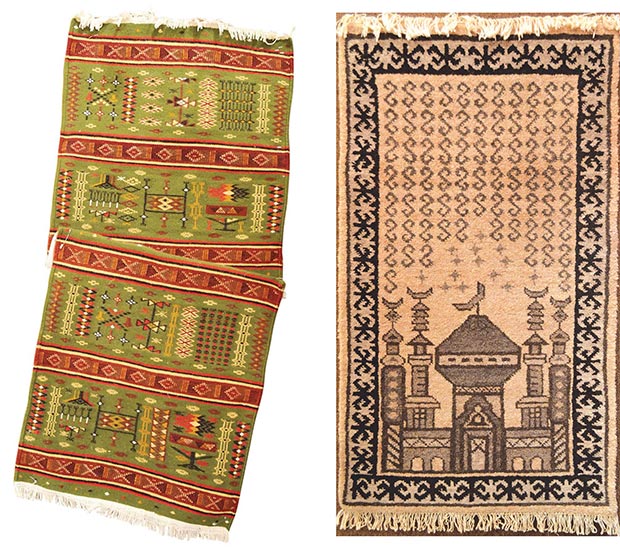 A handmade Prayer Carpet (Zarbiya) from Algeria, by Artisan Safia Timezghine / Right: A handmade Prayer Carpet from Kyrghyzstan by Artisan Nurbubu Maripova / Courtesy of IRCICA
A handmade Prayer Carpet (Zarbiya) from Algeria, by Artisan Safia Timezghine / Right: A handmade Prayer Carpet from Kyrghyzstan by Artisan Nurbubu Maripova / Courtesy of IRCICA
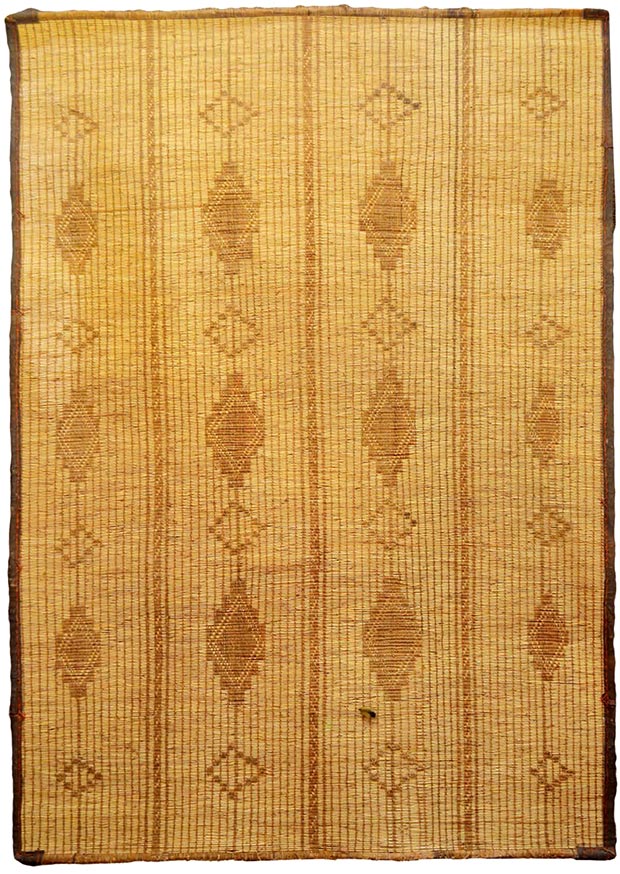 A handmade Prayer Carpet made from palm leaf and derived from a natural historical painting in Mauritania - Ain Tawkat, 84x110 cm / Courtesy of IRCICA
A handmade Prayer Carpet made from palm leaf and derived from a natural historical painting in Mauritania - Ain Tawkat, 84x110 cm / Courtesy of IRCICA
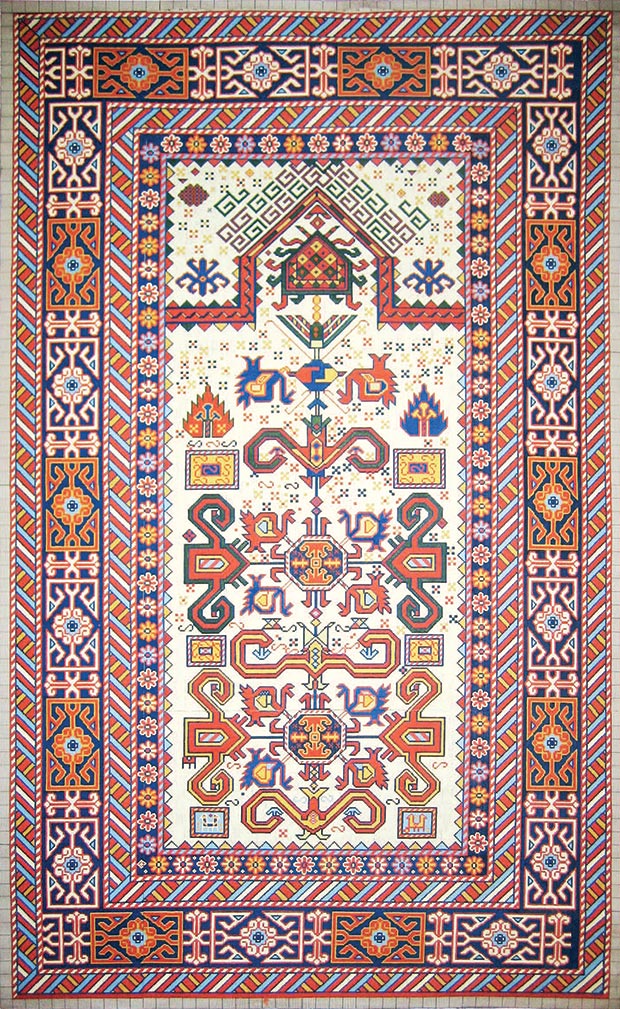 A type of Iranian Prayer Carpet with geometrical ornamentation and other symbols, Karim Mirzaee, Iran / Courtesy of IRCICA
A type of Iranian Prayer Carpet with geometrical ornamentation and other symbols, Karim Mirzaee, Iran / Courtesy of IRCICA
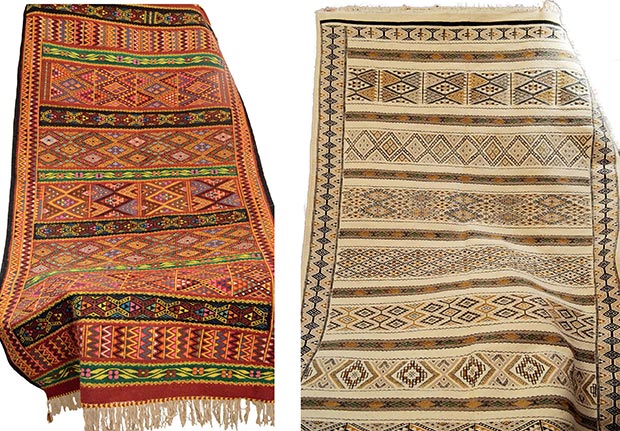 Left: A handmade Algerian Berber Prayer Carpet made from natural wool by Artisan Safia Timezghine / Right: A handmade Algerian Barber Prayer Carpet made by Artisan Safia Timezghine, from natural wool, 120x70 cm / Courtesy of IRCICA
Left: A handmade Algerian Berber Prayer Carpet made from natural wool by Artisan Safia Timezghine / Right: A handmade Algerian Barber Prayer Carpet made by Artisan Safia Timezghine, from natural wool, 120x70 cm / Courtesy of IRCICA
 Turkmenistan Prayer Rug by Artisan Ajap Bayriyeva / Prayer Carpet No.10, 125x80 cm, the end of 20th century. Material: threads of warp (ivory wool), pile and weft - sheep's wool / Courtesy of IRCICA
Turkmenistan Prayer Rug by Artisan Ajap Bayriyeva / Prayer Carpet No.10, 125x80 cm, the end of 20th century. Material: threads of warp (ivory wool), pile and weft - sheep's wool / Courtesy of IRCICA
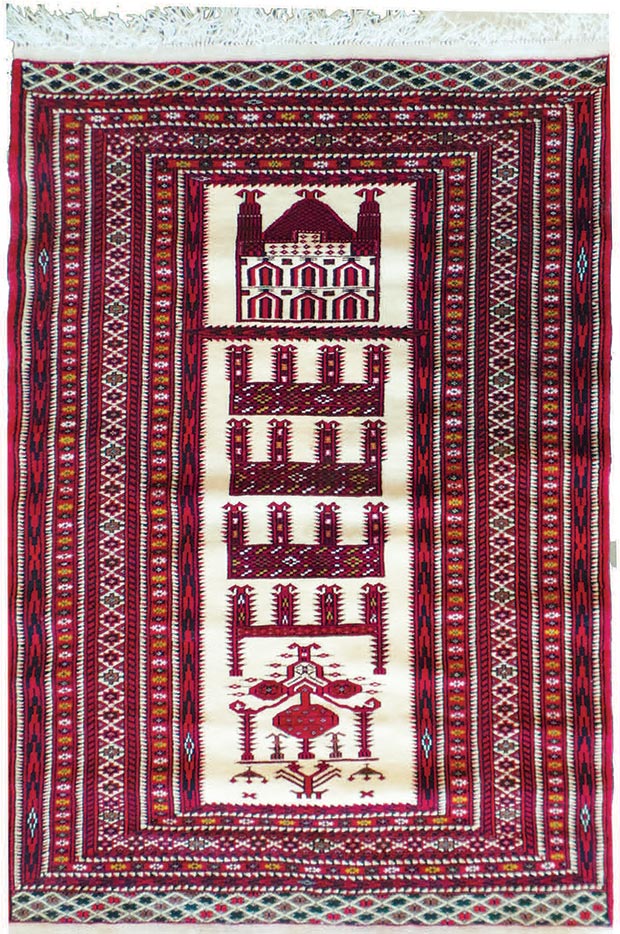 Turkmenistan Prayer Rug by Artisan Ajap Bayriyeva / Pray Carpet No.2, 138x95 cm, 2007. Material: threads of warp, weft and pile made from natural wool / Courtesy of IRCICA
Turkmenistan Prayer Rug by Artisan Ajap Bayriyeva / Pray Carpet No.2, 138x95 cm, 2007. Material: threads of warp, weft and pile made from natural wool / Courtesy of IRCICA
The book 'Handmade Prayer Carpet Through History' is considered to be the first academic document about the prayer carpets, providing detailed data of the measurements, classifications, dimensions, types of colours, designs and other relevant important data on every piece of carpet.
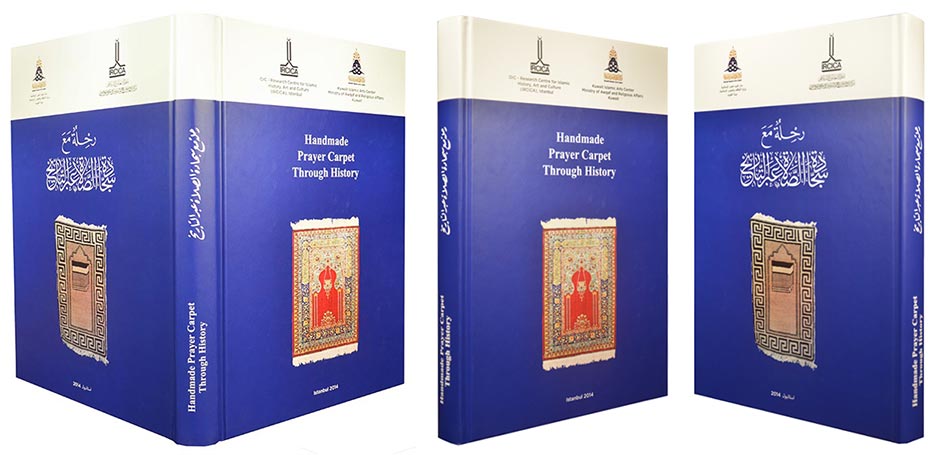 The book 'Handmade Prayer Carpet Through History' / Courtesy of IRCICA
The book 'Handmade Prayer Carpet Through History' / Courtesy of IRCICA
To order your copy of 'Handmade Prayer Carpet Through History', please send an email to IRCICA: .(JavaScript must be enabled to view this email address) or send your request to: .(JavaScript must be enabled to view this email address).
IRCICA is an international institution active in the fields of research, publishing, documentation and information. Its mandate covers multifarious themes in the fields of the history of Muslim nations, history of arts and sciences in Islam, and other subject areas in Islamic culture and civilization. By means of these activities, IRCICA aims at studying and better introducing the Islamic culture and civilization throughout the world and acting as a catalyst for research and cooperation in these areas to promote mutual understanding between Muslims and with other nations and cultures of the world.
Comments
Add a comment